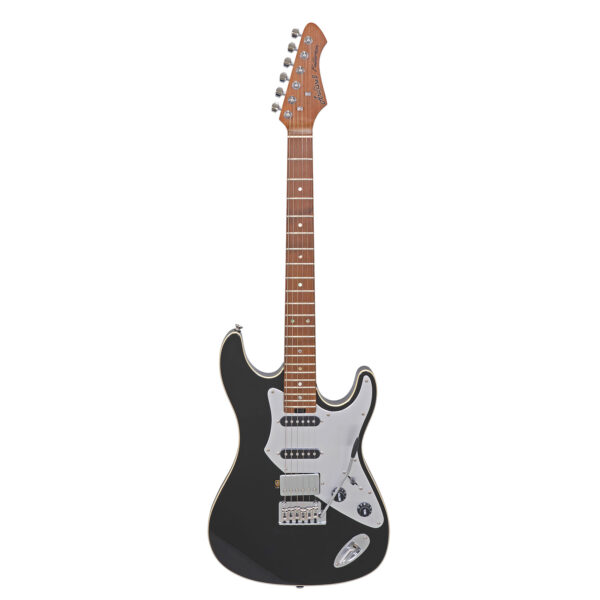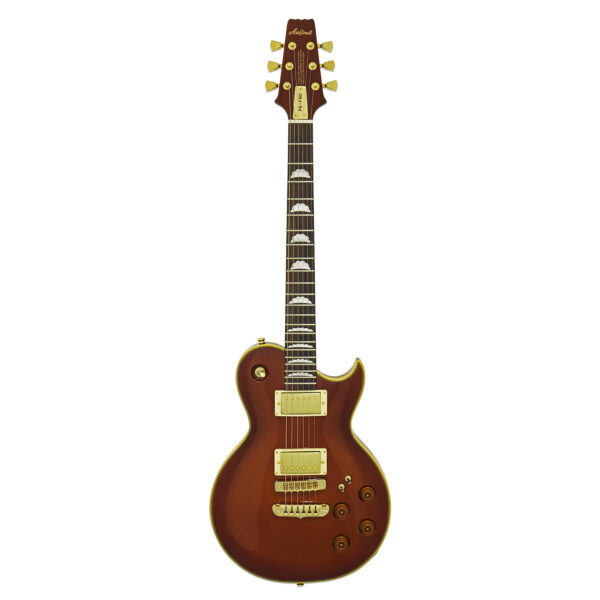Aria Blog
Electric vs. Acoustic Guitars: How to Choose the Right Guitar for You
by Ron Clark

If you’re thinking about learning to play the guitar or have just started, you may not know the best guitar for your needs. Having a guitar will help you progress in your learning, if nothing more than utilizing it or outside practice.
But which is the right guitar for you? Choosing between an acoustic guitar and an electric guitar is challenging; both offer some benefits and some obstacles.
Learning to play the guitar is an exciting and fun endeavor, but you may feel overwhelmed with the type of guitar to play. While there is no easy answer, you must obtain all of the information regarding both guitars before deciding.
Look no further; this article will help equip you with the knowledge you need about each kind of guitar to make the right decision for your musical journey.
Acoustic Guitar vs. Electric Guitar: The Similarities
Even though the types are different, acoustic and electric guitars have similarities. The most noticeable similarity between the two is that they both have six strings. Both types of guitars also have the following:
- Tuning pegs, which allow you to change the pitch of the strings
- A fretboard;
- Frets, or smaller lines of metal across the board on the arm of the guitar, help to indicate sound intervals.
Acoustic Guitar vs. Electric Guitar: The Differences
Now that you know the similarities, you can examine the differences. The acoustic guitar is commonly recognized by the sound hole in the center of the instrument’s hollow body.
The sound hole works with the strings’ vibrations to create resonance and produce sound without amplification. With an electric guitar, there is a solid body without a hole and a need for amplification. The metal bars, known as pickups on the guitar’s body, pick up the vibrations on the strings to convert the sound through the amplifier.
Electric guitars have thin necks with less space between the strings. The neck on an acoustic guitar is thicker, and the strings are placed farther apart. It directly correlates to the pressure you put on the strings to make the sound; you must push down harder on an acoustic guitar.
Body size is another significant difference between an electric and acoustic guitar. The acoustic tends to be bigger and bulkier but more portable (no need for a lot of equipment). The electric guitar is smaller and thinner, giving the illusion that it’s more portable, but there’s the need for extra mechanical equipment to amplify sound.
Your fingering is one last compelling difference when learning the guitar. Since the acoustic guitar has a broader and thicker neck, as stated before, it requires more pressure to be put on the strings to produce sound. The electric guitar doesn’t need nearly the same force; a light touch is enough to create a considerable vibration. If you’re interested in playing quick-fingered solos, the electric guitar will be easier.
Music Genres for Each
The sound that comes from each guitar is going to be drastically different. You may want to choose your guitar to learn, depending on the type of music you’d like to play. It’s necessary when taking guitar lessons and learning some of the easiest guitar songs that you enjoy playing them.
The genres most closely associated with acoustic guitar include the following:
- Country
- Folk/traditional
- Emo
- Songwriter-driven
- Indie
- Bluegrass
- Classical
- Rhythm & Blues
If you go with the electric guitar, the genres you’ll likely play may include:
- Hard Rock
- Punk
- Alternative
- Funk/Disco
- Blues
- Indie Rock
- Heavy Metal
Don’t feel pigeonholed into playing a specific type of music based on your chosen guitar. However, there’s no hard-fast rule about what music can or cannot be played. Feel free to play what you want, and work with your guitar instructor to learn different styles.
Pros and Cons of Each
The choice of what guitar to learn is ultimately up to you, but it can help to weigh some of the pros and cons of each. Here’s a short breakdown of the pros and cons of each guitar for you to help you make the right decision.
Acoustic Guitars: The Benefits
You don’t need an amp to play the acoustic guitar, so it’s easy to practice at home or jam out with friends. Everything you need is contained in the instrument to make the sound.
Another advantage is that fingerpicking is more effortless with an acoustic. The strings placed further apart on the fretboard make it easier to maneuver your hands and fingers across them. One last advantage to an acoustic guitar is that it is less expensive than electric guitars.
Acoustic Guitars: The Cons
You cannot change the sound that comes from your acoustic guitar. Since there’s no plug or hardware required, the sound stays the same. You also tend to hurt your fingers when playing the guitar since it requires more pressure on the strings. Many acoustic guitarists and players have calluses on the tips of their fingers from all of their playing.
Electric Guitars: The Benefits
You control the sound with an electric-style guitar. Since knobs, a bar, and switches are usually associated with the guitar and amp, you can create and tweak the produced tone.
The design of an electric guitar allows you to finger or pick the strings more easily. The guitar lends itself to solos if that interests you. The various options within an electric style can also give you a variety of sounds, so you can produce one similar to the sound of an acoustic when you want.
Electric Guitars: The Cons
Electric guitars tend to be more expensive, mainly because you require extra equipment and there are more gadgets to work with on them. Although slimmer in build, electric guitars are far heavier than acoustic guitars. So when it comes to portability, it’s more challenging with the heavier instrument (along with all the equipment) than with an acoustic guitar.
What Guitar is Best?
The choice of electric vs. acoustic guitar is up to you – it’s essential to know everything you can and experiment before you decide. There are many options to choose from in the differently made types, so it can be helpful to try them both out before you choose.
Both instruments require time, patience, and effort to learn. You must have time to dedicate to your learning. Working with an instructor and taking lessons is the best way to ensure that you understand the proper fundamentals, and it can help you choose the right instrument for you. Eventually, you’ll choose a guitar that you want to pick up and play over and over and choose songs that suit your own personality and style.









